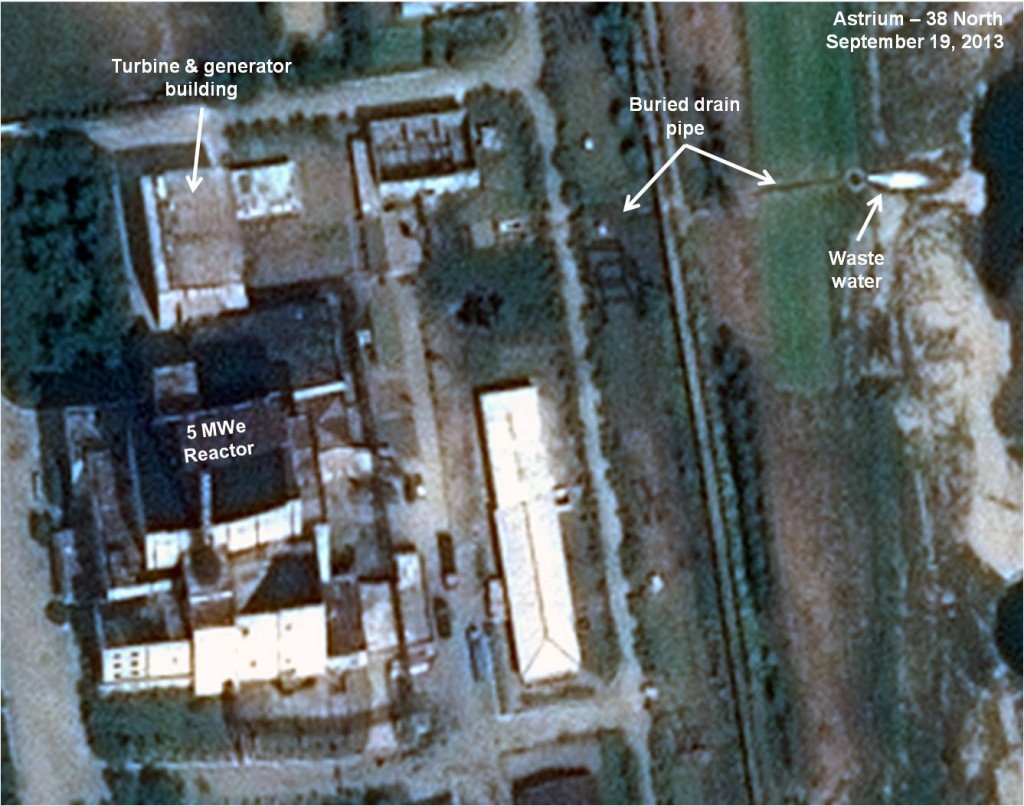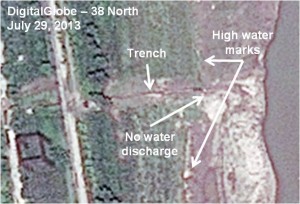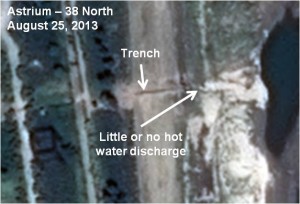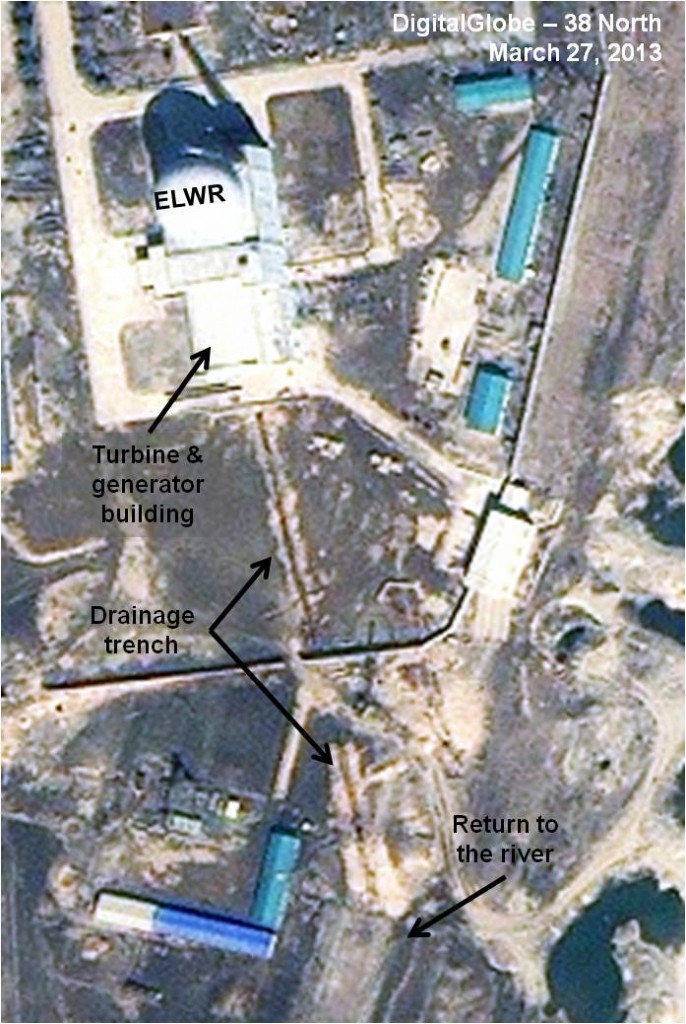More Evidence That North Korea Has Restarted Its 5 MWe Reactor
New commercial satellite imagery from September 19, 2013 provides further evidence that North Korea has restarted its 5 MWe plutonium production reactor located at the Yongbyon Nuclear Scientific Research Center. Imagery shows hot waste water being released into the Kuryong River from a recently installed drainpipe, part of a new secondary cooling system completed in summer 2013. This release of hot water indicates that the reactor is in operation and the turbine powered electrical generators are producing power.
Reactor Dumping Hot Water
New commercial satellite imagery from September 19 provides further evidence that Pyongyang has restarted its 5 MWe reactor. Previous imagery from August 31 showed hot steam rising from the generator building, indicating that North Korea was in the process of restarting the reactor. The new imagery shows a stream of hot water being dumped into the river from the end of a new buried pipeline that carries hot water and steam from the reactor’s generators (figure 1). (The recently built drain pipe is a critical part of a new secondary cooling system completed in summer 2013 to replace the cooling tower previously destroyed under a Six Party Talks Agreement in 2008.) The most likely explanation is that the reactor is now operating and the generators are producing electrical power.[1]
Figure 1. Waste water seen being dumped into the Kuryong River.

An analysis of satellite imagery from late July 2013 shows no indication of hot water being discharged into the river (figure 2). This was just after the flood waters from mid-July—which had covered the end of the drain pipe—had receded and the reactor had not yet been started. By August 25, it is possible that a small amount of water may have been discharged, indicating a reactor test had occurred (figure 3). On August 31, when white steam released from the roof of the turbine building was spotted in commercial satellite imagery—the first sign that the reactor was restarting—small amounts of foam and hot water were present at the end of the drainpipe, indicating that a test of the turbine-powered electrical generator system had occurred (figure 4). Imagery from September 19 shows the amount of white foam has increased, indicating that the turbines have been activated and have begun generating electrical power (figure 5).
Figure 2. No hot water discharge.

Figure 3. Little to no discharge.

Figure 4. Small amount of hot water discharge.

Figure 5. Increased discharge.

Start-Up of the Experimental Light Water Reactor: Signals to Watch For
The Experimental Light Water Reactor (ELWR) located adjacent to the plutonium production reactor is not believed to have entered its start-up period yet. The dumping of hot waste water from the drain pipe that comes directly out the back end of the turbine hall, past the pump house and into the river will be an indicator that the facility is becoming operational.
Figure 6. The drain pipe was under construction in March 2013; discharge would indicate start up activities had begun.

[1] Nuclear reactors generate electricity by heating water until it becomes high pressure steam that, in turn, is piped to and spins a turbine. The steam cools, after it passes through the turbine and condenses into hot waste water that must be removed from the turbine building. It is then pumped into the drain pipe and when the hot water reaches the river bank it produces white foam at the end of the drain pipe with the water running down the exposed bank into the river.
